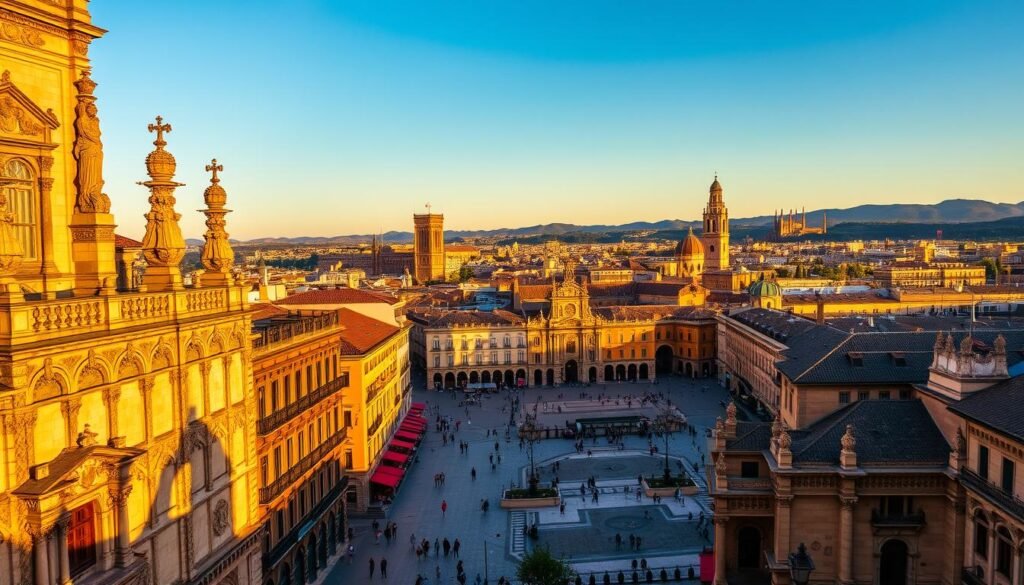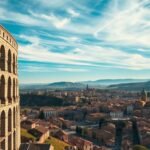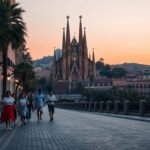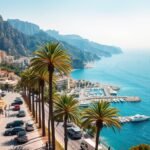Welcome to Salamanca, a Spanish gem where golden sandstone glows under the sun and centuries of history whisper through cobblestone streets. This UNESCO World Heritage city dazzles visitors with its ornate Plateresque architecture, lively student energy, and mouthwatering tapas scene. But even in a place this welcoming, a little local know-how goes a long way.
Planning your trip? You'll want to savor every moment here. From the iconic Plaza Mayor to hidden taverns serving jamón ibérico, timing is key. Many travelers miss out by rushing through meals or overlooking quiet courtyards tucked behind grand facades. Others underestimate how the city's university legacy—dating back to 1218—shapes daily rhythms.
This guide isn't just about sidestepping missteps. It's about unlocking Salamanca's magic. Learn why skipping a midday siesta might leave you hungry when restaurants close, or how spotting a carved frog on the university building could make your visit unforgettable. Ready to explore responsibly? Let's dive into tips that blend cultural respect with unforgettable experiences.
Discovering Salamanca’s Rich History and Culture
At the heart of Spain's intellectual legacy lies Salamanca, where medieval classrooms still echo with wisdom. Founded in 1218, the University of Salamanca isn't just Spain's oldest—it's a living monument where scholars once debated under vaulted ceilings. Today, students fill plaza cafés, blending youthful energy with centuries-old traditions.
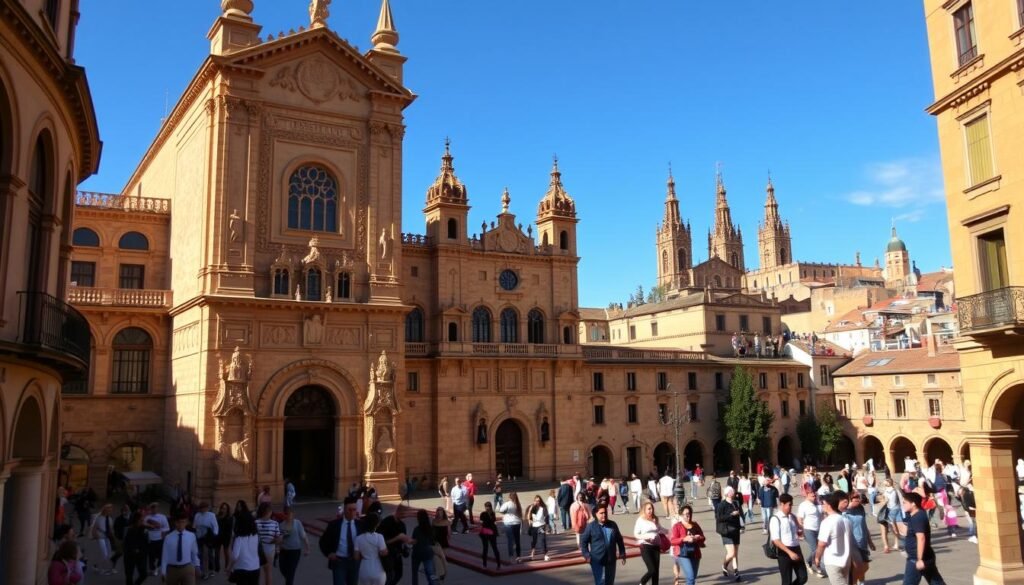
The city's skyline tells its story through stone. The Old Cathedral whispers Romanesque secrets, while the New Cathedral towers with Gothic grandeur. Don't miss the university's ornate façade—hunt for the hidden frog carving said to bring academic luck.
Three marvels define Salamanca's architectural soul:
- The University's Plateresque entrance, a stone tapestry of intricate carvings
- Twin cathedrals showcasing 500 years of evolving design
- Renaissance palaces turned vibrant student hubs
Golden sandstone glows at sunset, creating perfect photos against these historic backdrops. But Salamanca's magic lives beyond its buildings—it's in the buzz of bookshops near lecture halls and the way shadows dance on 15th-century walls during evening strolls.
This city doesn't just display history—it invites you to walk through chapters of Europe's cultural evolution, one cobblestone at a time.
Things Not to Do in Salamanca Spain
The city's academic heartbeat and sacred spaces call for mindful exploration. Resist the urge to treat Plaza Mayor like a beach—sunbathing or picnicking on its regal stones draws frowns from locals. This Baroque masterpiece thrives as a social hub, not a lounge chair destination.
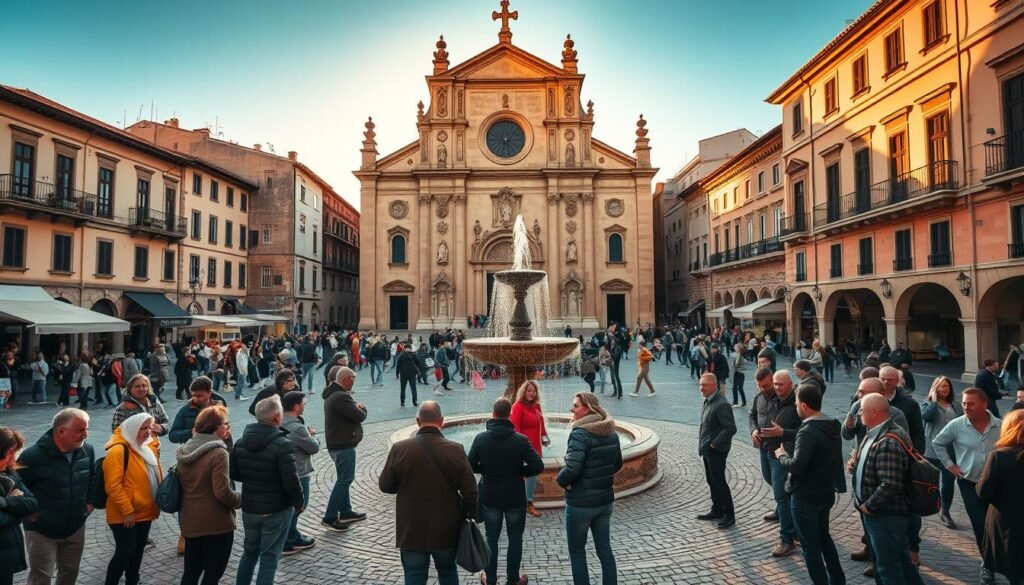
Near the University of Salamanca, keep voices hushed. Students have debated here since the 13th century, and today's scholars deserve the same focus. Touching carvings on historic buildings? Skip it—the famous frog statue on the university facade loses its charm when handled.
At the cathedral complex, remember it's both a marvel and a place of worship. Dressing casually might get you side-eyed during mass times. Save the selfie stick for exterior shots of the golden sandstone.
Casa de las Conchas charms visitors with its shell-covered walls, but don't linger too long snapping photos. Crowds form quickly, and patience preserves the magic. For tapas, bypass overpriced spots near Plaza Mayor—wander two streets over for authentic raciones at half the cost.
This UNESCO city rewards those who match its dignified rhythm. Blend in by observing where others pause, speak softly, and let history guide your steps.
Navigating Iconic Landmarks Without Missteps
Exploring Salamanca's landmarks feels like stepping into a living history book. Start at the Roman Bridge, where ancient stones stretch across the Tormes River. Arrive early to avoid crowds and watch sunlight paint the 2,000-year-old structure gold.
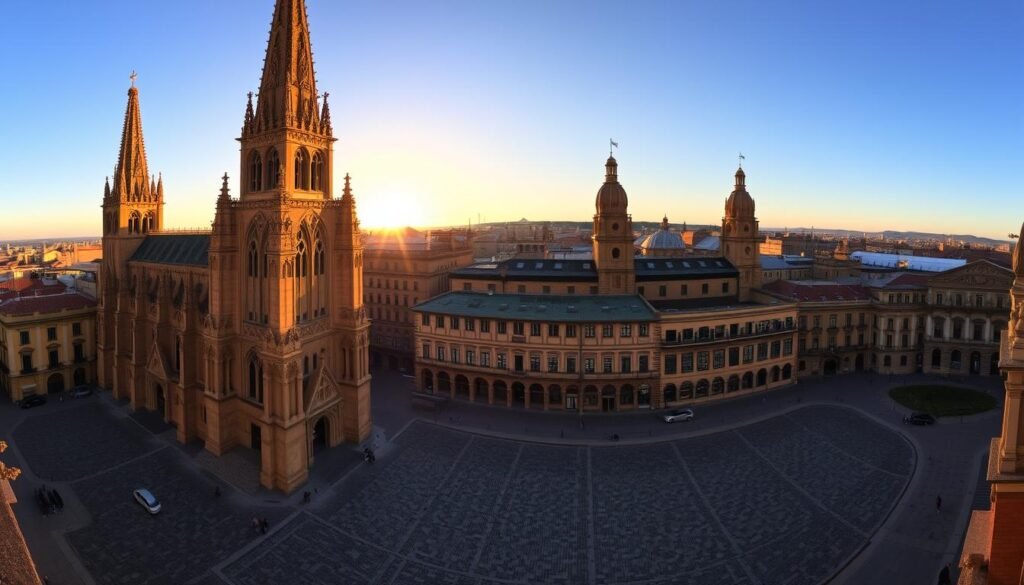
Climb the Ieronimus Tower for unmatched views. This cathedral climb rewards with panoramic cityscapes—spot the twin cathedrals' contrasting styles below. Time your ascent: late afternoons cast warm glows on golden sandstone facades.
Three tips elevate your landmark tour:
- Pause at the New Cathedral Salamanca's facade—spot astronaut carvings added during 1992 restorations
- Let guided tours reveal hidden details, but leave room for solo exploration
- Wear sturdy shoes for uneven steps in bell towers
Many rush through the Roman Bridge's arches. Instead, linger near its midpoint. Hear river whispers blending with distant cathedral bells—a sensory snapshot of Salamanca's layered past.
At the cathedrals, rotate slowly beneath vaulted ceilings. Sunlight filters through stained glass, creating kaleidoscope patterns on ancient floors. Guides often miss this natural light show between 10-11 AM.
Balance structure with spontaneity. Map key stops like towers and the bridge, but follow intriguing alleyways between them. Each detour reveals new perspectives on Spain's architectural masterpiece city.
Savoring Authentic Spanish Flavors Safely
Imagine biting into a crispy hornazo, its savory filling whispering tales of family recipes passed through generations. Salamanca's food scene blends tradition with creativity, where every meal becomes a cultural exchange. Locals take pride in their pork-centric cuisine—cured jamón ibérico hangs like edible art in taverns, while golden pastries beckon from bakery windows.
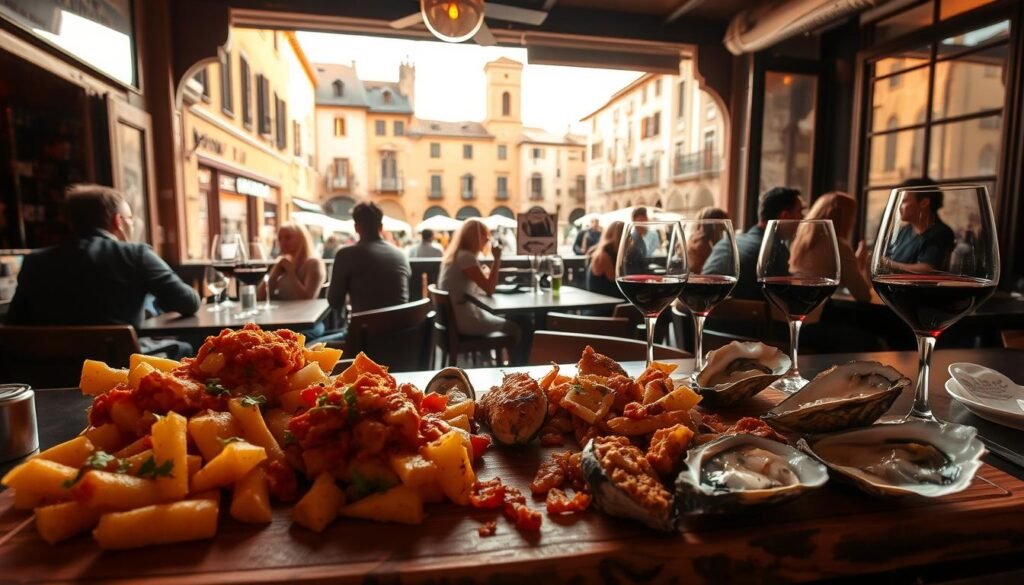
| Must-Try Dish | Best Paired With | Where to Find |
|---|---|---|
| Hornazo (meat-stuffed pastry) | Local red wine | Panaderías near Plaza Mayor |
| Tapas: Chorizo al vino | Crusty bread | Barrio del Oeste taverns |
| Farinato (spiced pork sausage) | Fried eggs | Mercado Central stalls |
Seek eateries where menus feature seasonal ingredients and chalkboard specials. Authentic spots often display cured meats behind glass counters—ask for samples before purchasing. For tapas, follow students to bars offering free bites with drinks during hora del vermú (vermouth hour).
Bring a taste of home by visiting specialty shops near Casa de las Conchas. Vacuum-sealed lomo embuchado (cured pork loin) travels well. Remember: quality trumps quantity. Share smaller plates to sample more flavors without overindulging.
As the sunset paints sandstone walls amber, join locals at standing-only counters. Let each bite of paprika-kissed chorizo or flaky pastry connect you to Salamanca's edible heritage. The secret? Savor slowly, shop wisely, and let every meal become a delicious memory.
Understanding Salamanca’s Nightlife Dos and Don’ts
When the sun dips below Salamanca's golden skyline, the town transforms. Students and locals flood streets lined with historic buildings, creating an electric mix of tradition and modern energy. Upscale cocktail lounges share cobblestones with cozy taverns where €2 tapas fuel laughter until dawn.
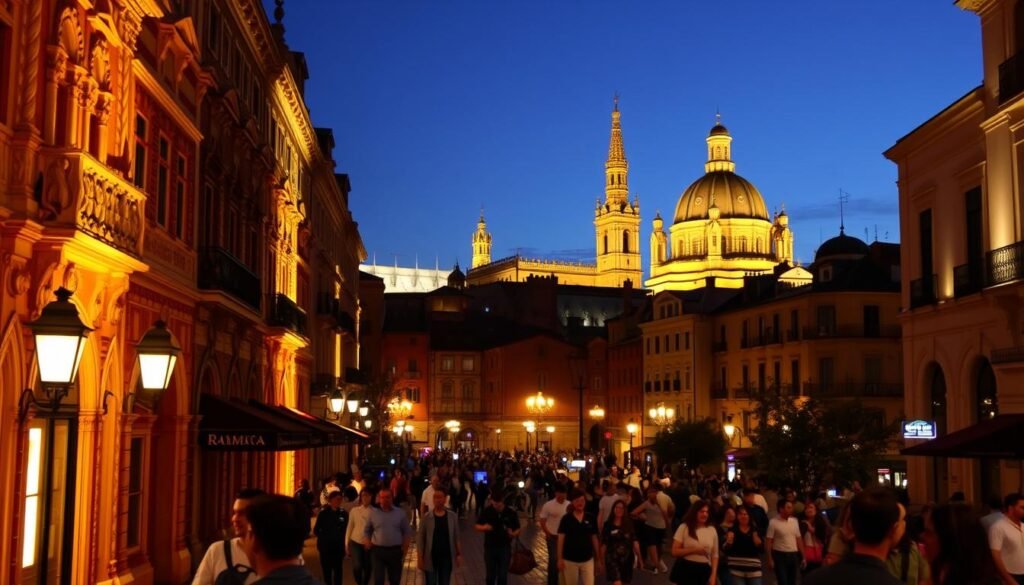
Start your evening in Calle Varillas. This pedestrian zone buzzes with affordable bars inside 16th-century structures. Avoid lingering too long at one spot—locals hop between venues. For a sophisticated vibe, head near Plaza Mayor where candlelit patios glow under Baroque facades.
Three rules keep nights smooth:
- Respect quiet zones near university buildings after midnight
- Learn basic Spanish phrases for ordering drinks
- Carry small bills—many spots don't split checks
The way locals socialize might surprise you. Dinner starts late, and nightclubs fill around 2 AM. Join the flow by pacing yourself—sip tinto de verano (wine spritzer) instead of rushing drinks. Visitors often miss hidden gems like underground flamenco joints in former wine cellars.
Stay alert in crowded areas, especially near the Roman Bridge after dark. Stick to well-lit streets connecting major landmarks. Most importantly, embrace the town's rhythm. When bars erupt in spontaneous singing, clap along. That's Salamanca's magic—history and revelry dancing as one.
Tips for a Smooth Day in Salamanca
Start your morning as locals do—with café con leche near Plaza Mayor. Over the years, savvy travelers have perfected daytime routes balancing iconic landmarks and quiet corners. Prioritize UNESCO World Heritage sites early: the twin cathedrals glow best in morning light, and crowds arrive by 10 AM.
Three essentials for your day:
- Follow the one-day Salamanca route to connect key places without backtracking
- Pause at Casa Lis—this Art Nouveau museum offers modern contrast to ancient streets
- Look down: hundreds of carved symbols hide in pavement stones near the university
Midday heat? Duck into cool cloisters or shaded plazas. Many miss the Camino Santiago markers etched into buildings—spot scallop shell symbols along Calle Toro. Keep comfy shoes handy: cobblestones charm but challenge tired feet.
Balance structured tours with wandering. Local guides reveal secrets like hidden rooftop views, but solo explorers discover tucked-away tapas bars. Wrap your day watching sunset from Roman Bridge—golden hour transforms the city into a living postcard of UNESCO World Heritage beauty.
Final Thoughts for an Unforgettable Salamanca Trip
As your journey through this historic city takes shape, let cultural awareness shape every step. Time meals around local schedules, save selfies for architectural wonders rather than sacred spaces, and let Plaza Mayor's energy inspire—not dictate—your pace. The savvy tourist knows Salamanca's magic lives in balancing tradition with modern discovery.
Pack patience for landmark visits and curiosity for backstreet tapas bars. Even a Salamanca one-day itinerary thrives when you respect academic zones and embrace evening social rituals. Remember: sturdy shoes conquer cobblestones, while an open mind unlocks hidden carvings and student-led hotspots.
Carry these lessons into golden-hued plazas and moonlit river walks. Every tourist becomes part of Salamanca's living story—one where 13th-century wisdom meets vibrant modern life. Ready to write your chapter? Start planning, wander with purpose, and share your favorite moments below. Your experience could light the way for future explorers.
